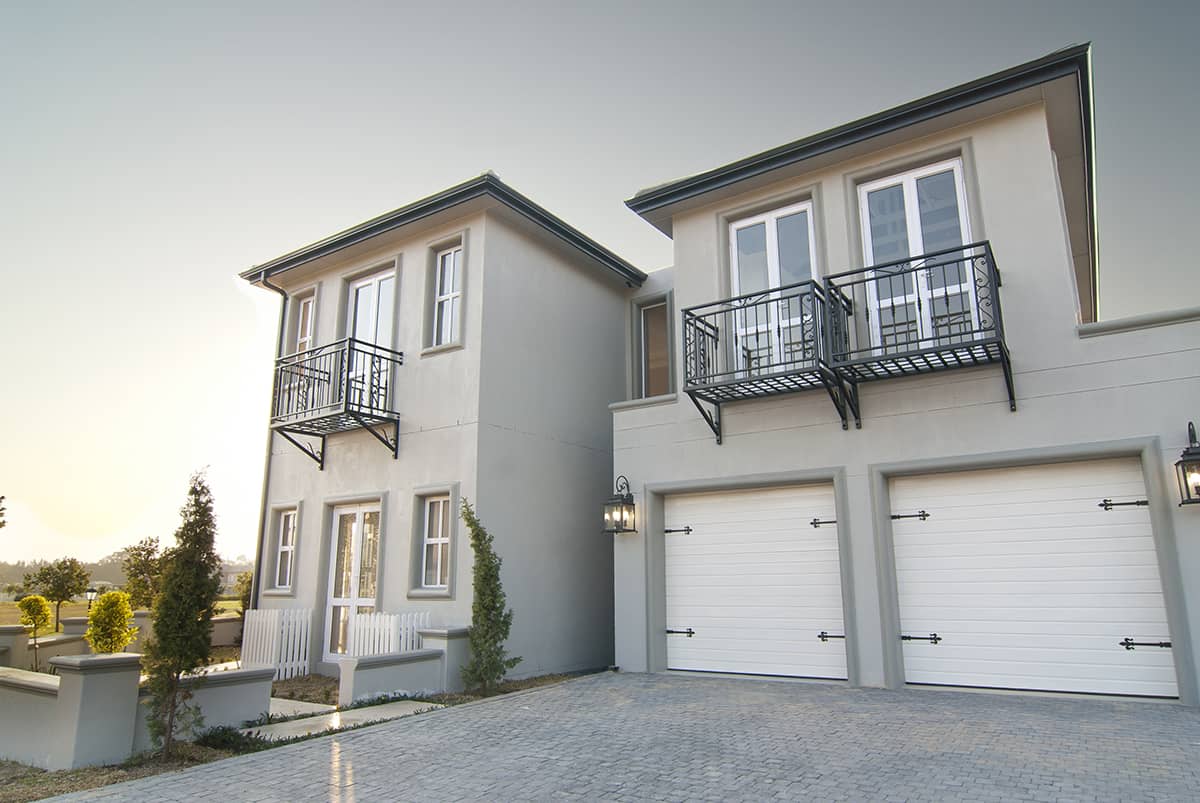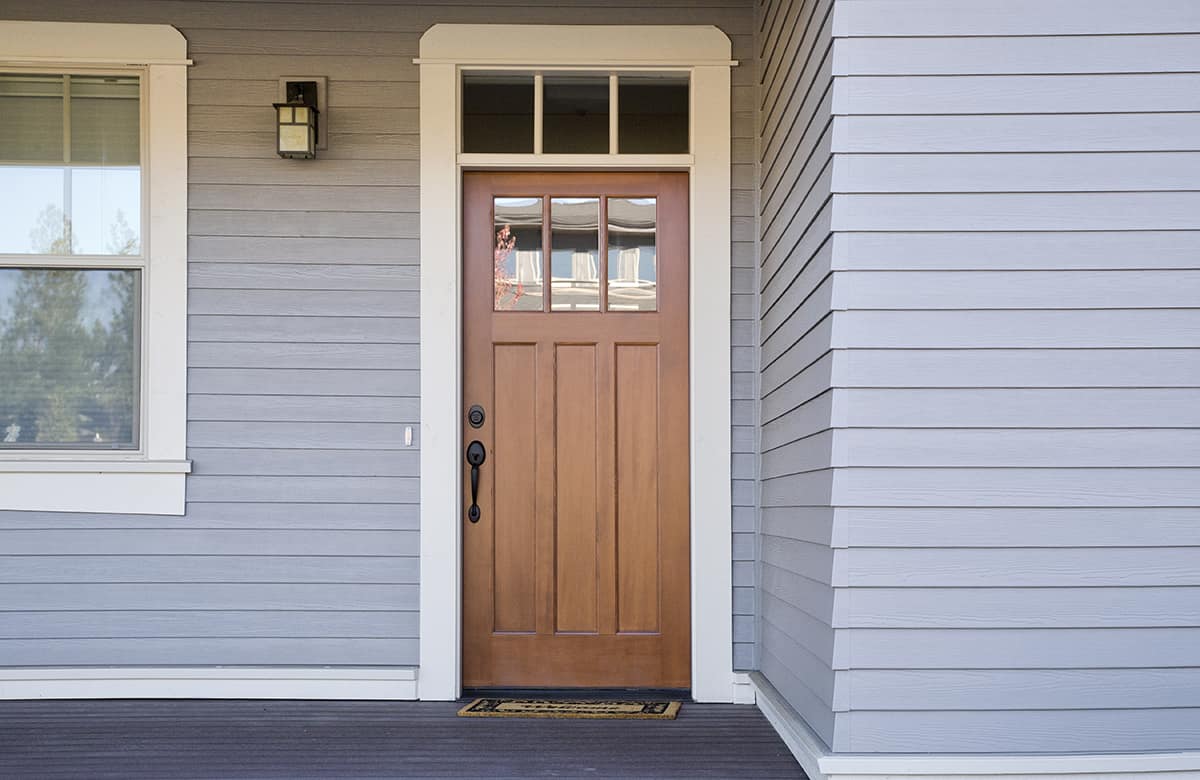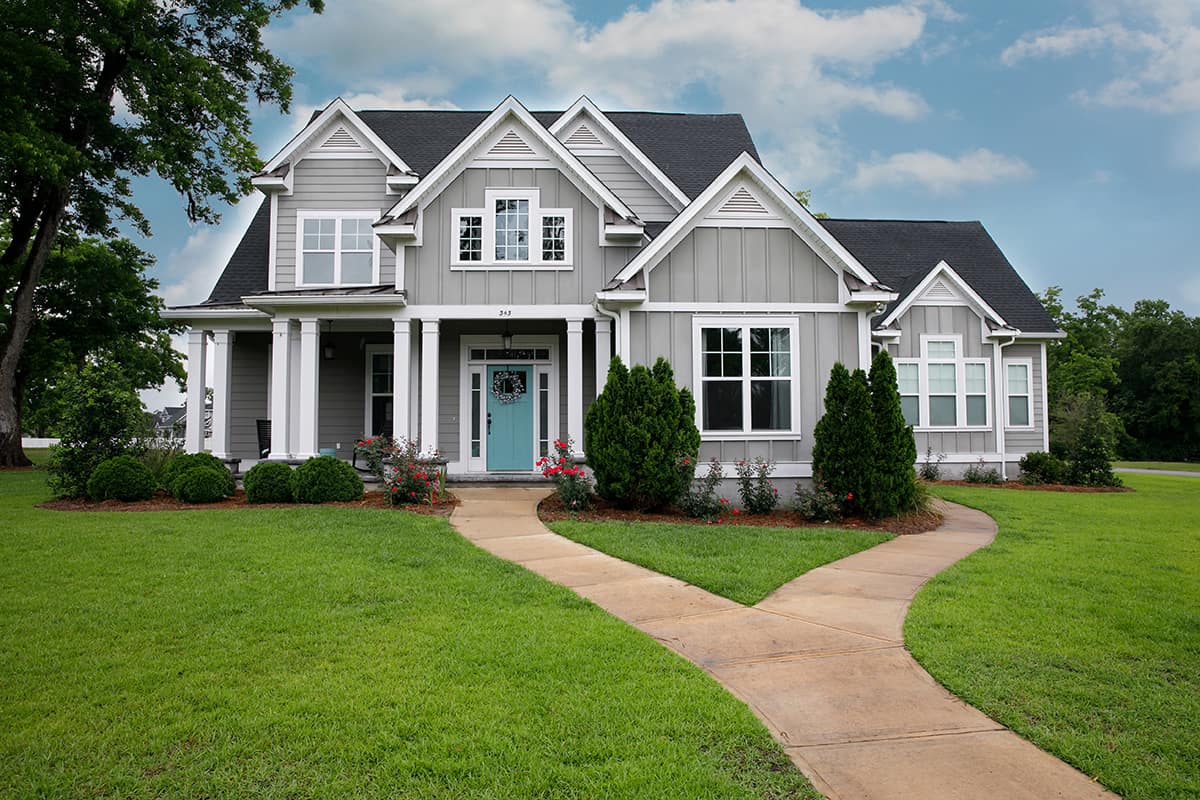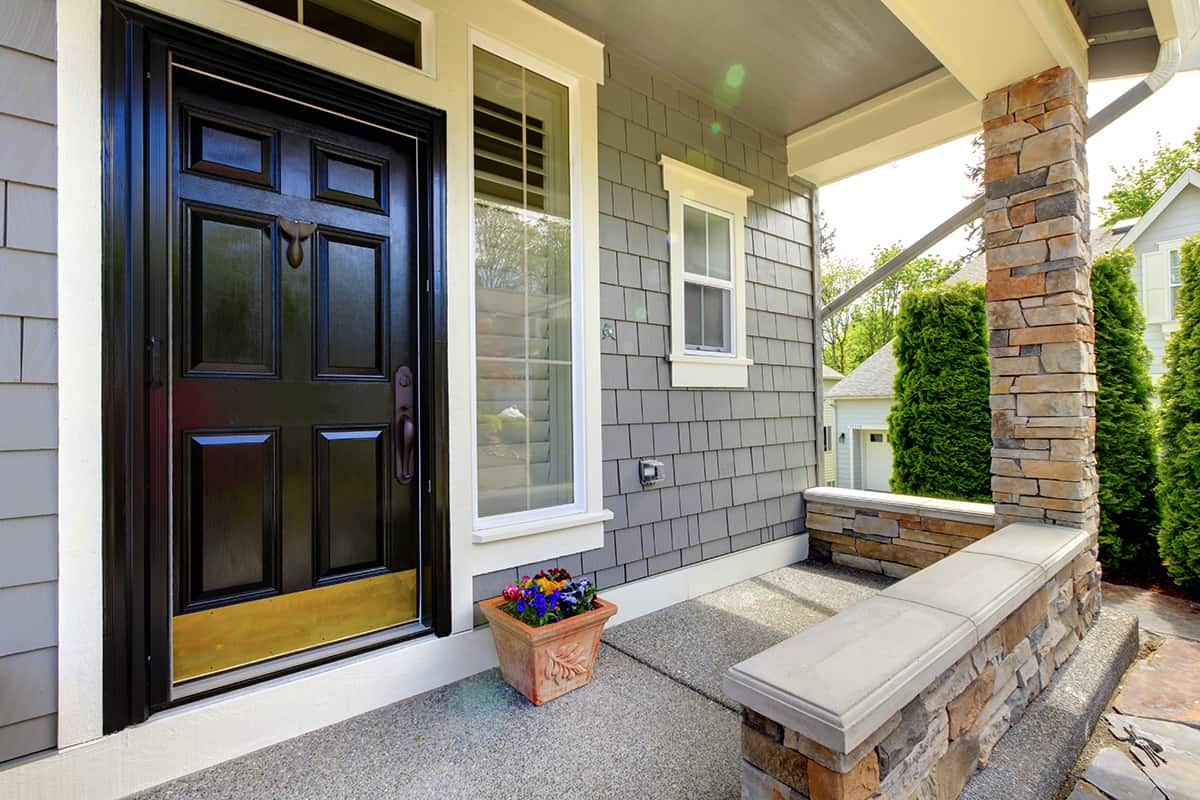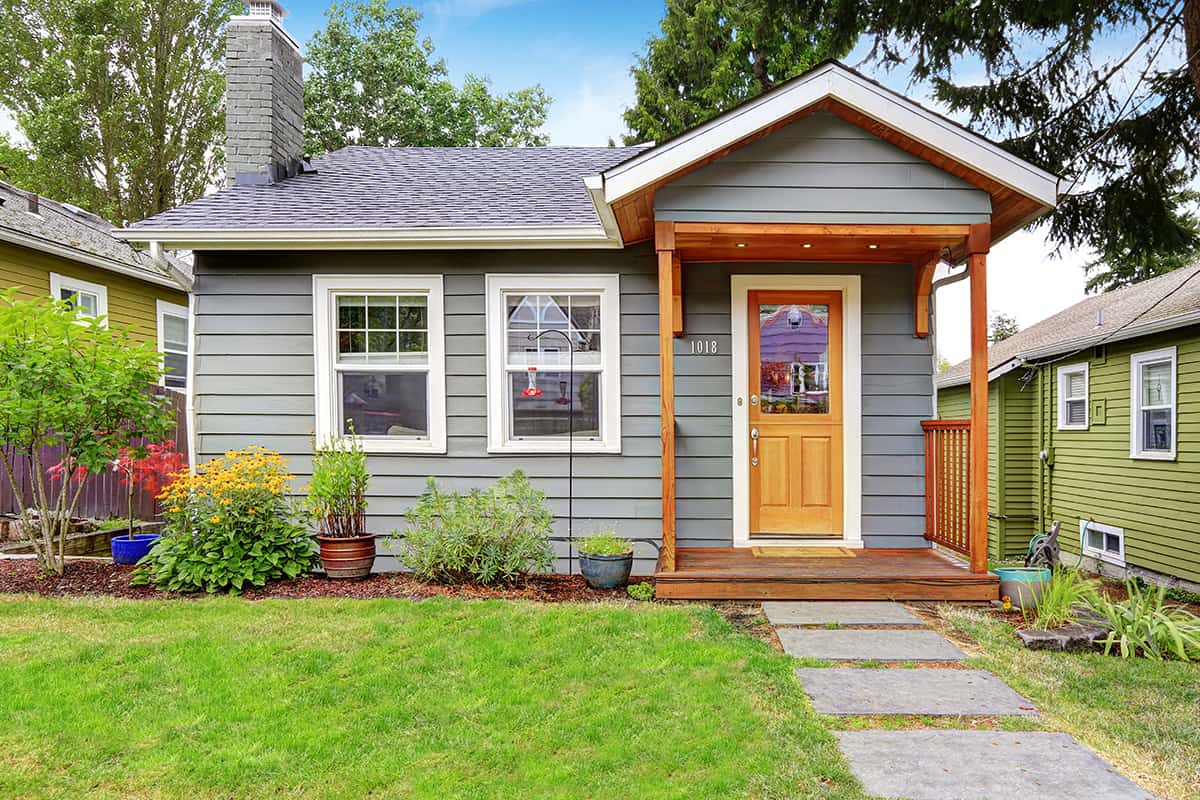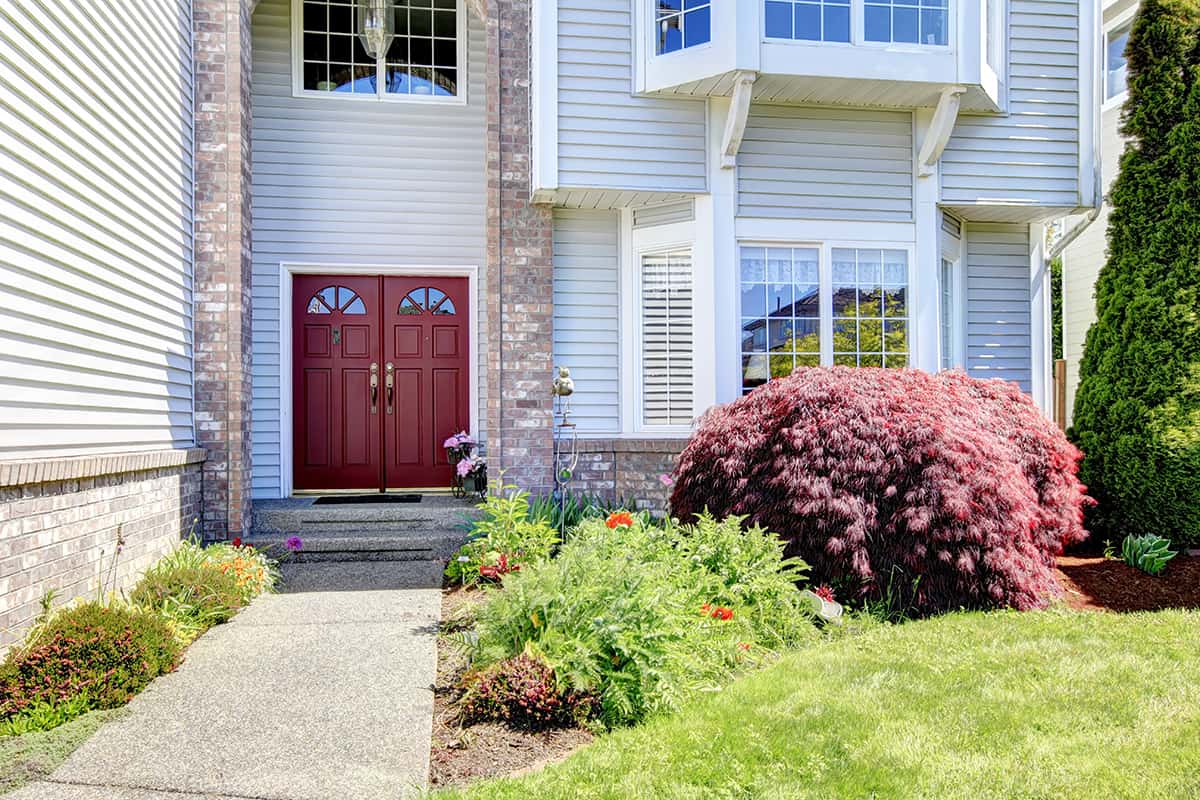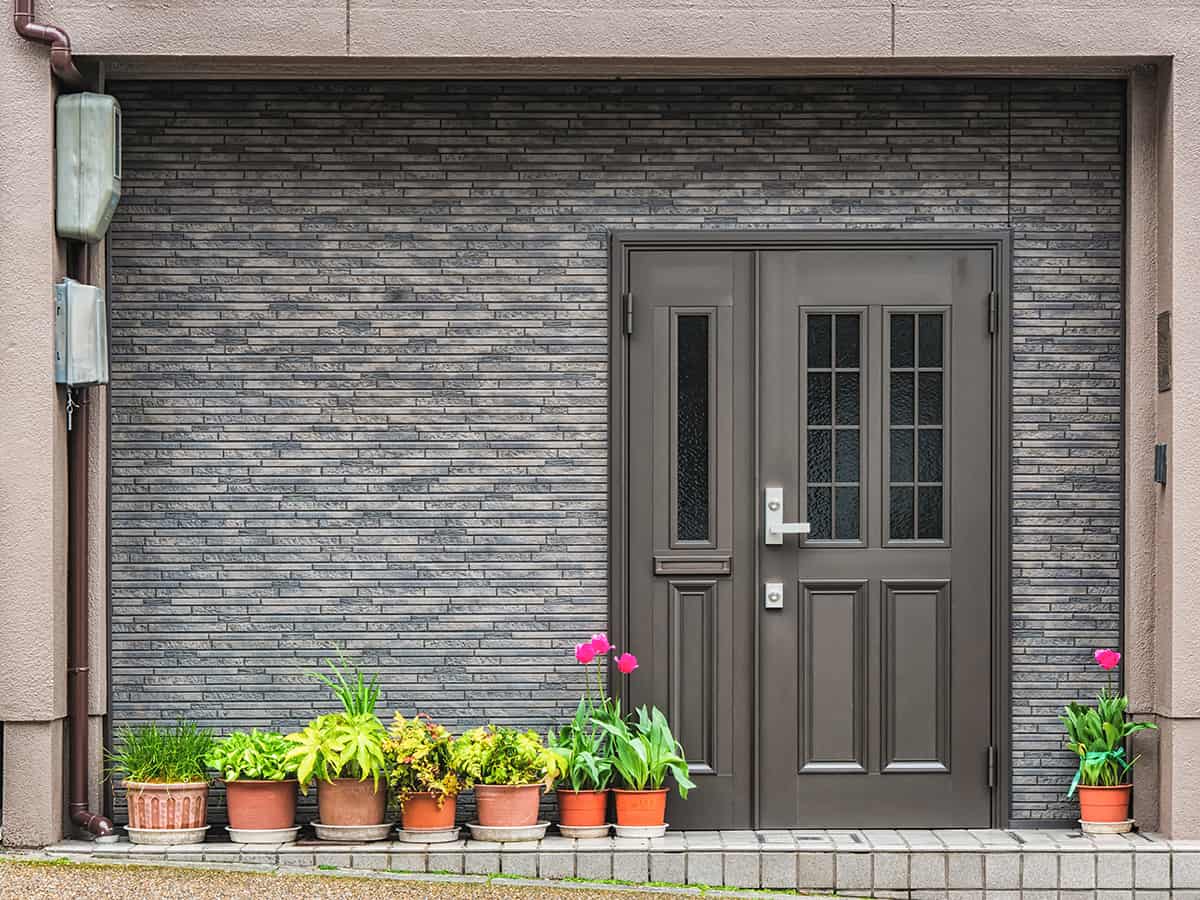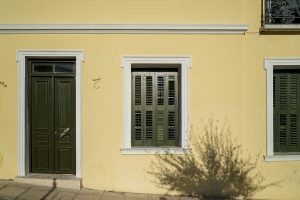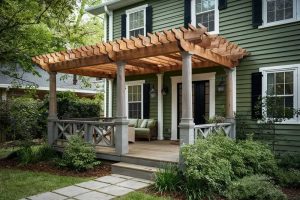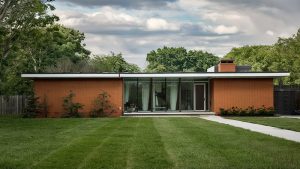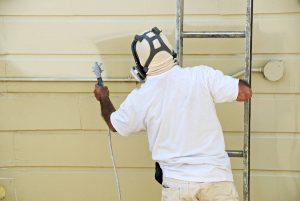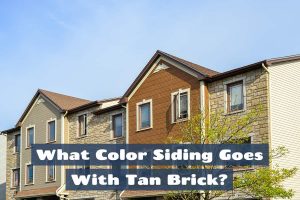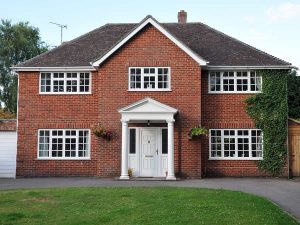Choosing a color for houses with gray bricks or gray siding shouldn’t be too challenging because there are so many colors that look stylish alongside gray.
Gray is a neutral color that can be warm if it has undertones of beige or brown, but it more typically leans toward the cooler range of colors, with undertones of blue. When choosing an accent door color for a gray house, you’ll want to consider the type of effect you are trying to achieve.
White and black are classic accent colors for a gray house, creating a contrast with shade rather than hue. For a brighter or bolder choice, red and yellow are both excellent accent colors for homes with gray exteriors. Here we explore the best accent door colors for gray houses and explain the different effects they can have on curb appeal.
Choosing an Accent Door Color
The task of choosing an accent color for the front door of your home comes down to so much more than simply selecting a color you like. You’ll need to consider a wide range of factors, such as what color will work with the style of your home, what color works with your surroundings, and what type of impact you want your front door to have.
Style
The style of a property should always be factored in when choosing any exterior decor elements because if you opt for colors or types of trim that aren’t in keeping with the style of the home then you can end up with a mess. Some colors, notably muted or neutral, can work well with any style of home, such as black, beige, and white.
However, if you have a traditional home, it could look peculiar if you paint your front door in pink, while a quirky cottage could look great with a pink front door.
Surroundings
The surroundings of your home should be considered when you make big changes to the exterior of your property. This is to ensure you don’t upset the neighbors, but also to help your home work in the context of the landscape.
For example, if you live in a woody area, you might draw inspiration from this and opt for a forest green front door, or in a coastal region a door in sky blue or navy blue would be appropriate to blend in with the vibe of the surroundings. You might also want to consider the surrounding properties and follow their lead; for example, if all of the homes on your street are decorated in very neutral or subtle colors, then it makes it look out of place for you to have a bright red door.
Effect
The effect you want to achieve by changing your front door color to match a gray house is probably the most important consideration, and having a clear idea of this can help narrow down your options. First of all, consider the types of accent colors that work with gray and think about the reaction they will induce when used together. The best accent colors are usually complementary, analogous, or monochromatic.
Complementary colors are those which contrast against the main color, which is gray. For a cool gray, a complementary color would be yellow, orange, or red, as these are warm colors. Using one of these colors as your accent door color will create a sense of balance and a stark contrast that creates feelings of energy and excitement. Effectively, a lively contrast makes for a lively atmosphere.
On the other hand, analogous accent colors create a more calming and soothing vibe, so these are recommended if you want your home to appear more peaceful and laid-back.
Analogous colors are found alongside your main color on the color wheel. Gray is not found on the color wheel, so in this instance, you should choose similar colors. If you have a blue-toned gray, then your analogous color will be blue. For a beige-toned gray, your analogous color might be brown.
Finally, monochromatic colors can create a neutral look that is either contrasting or calming, depending on the shades you opt for. With a gray house, your monochromatic colors will be white, black, and other shades of gray.
For a soothing look, choose an accent gray color for your front door that is a few shades lighter or darker than the gray of your walls. This will make for a subtle contrast that prevents the home from appearing flat, but it won’t spark an intense contrast.
Choose a color at the opposite end of the shading range for a more energizing look. For example, use black for the front door if the house is pale gray. If the house is dark gray, use white for the front door. The deeper shade contrast creates a disparity that looks intense, making for a bolder impact.
6 Accent Door Colors For a Gray House
Brown isn’t boring
Brown has a reputation for being quite bland and boring, but when used alongside gray, it really comes to life. This is because gray is a modern and cooling color, while brown is warm and is more commonly associated with traditional styles.
This juxtaposition of both style and color temperature means that brown creates a contrast when used as an accent color with gray, making it pop rather than appear dull and dreary.
In the house pictured here, light gray walls are next to a medium brown door, creating a subtle shade contrast as well as a color contrast. You can use brown paint or opt for a natural wooden door in a brown stain for a wholesome, earthy appeal.
Laidback Blue
The exterior color palette used in the house in this image is a good example of an analogous accent color. The blue of the front door is quite similar to the gray of the siding since both colors are medium-light and both colors are cool.
The overall effect of using blue as an accent door color on this gray house is calming and harmonious. There is no strong contrast to provoke an energetic response, so the overwhelming feeling is casual and peaceful.
Bold in Black
The colors used on the exterior of this house are monochromatic; they are all varying shades of the same hue. The gray of the siding is medium to light in shade, which contrasts heavily against the stark black front door.
This contrast is further highlighted by the white door frame separating the two colors. If you want to stick to neutral colors yet still make an impact, then this type of color palette is an excellent choice.
Tantalizing Tan
The natural wood tone of this front door contrasts beautifully with the mid-gray siding. The front door is an orange-yellow shade of wood that feels earthy and natural, warming up the exterior of the property, which otherwise would have looked quite cold.
The homely color works perfectly with the style of the house, which is cute and quirky, showing that the owners here have taken the style of this property into the equation when selecting their accent door color.
Ravishing in Red
The front door of this house is a rich shade of red that is warm and comforting next to the cool pale gray of the siding. There is a contrast here that is pleasing to the eye, yet it isn’t too overwhelming since both the shades used are fairly muted instead of bright.
The red color can also be picked up in the plants growing in the front garden. There is a shrub with red foliage and red flowers peeking out of the greenery, which helps to coordinate the red accent color and keep a consistent theme.
Gray on Gray
This home perfectly depicts how contrast isn’t always needed for a stylish look. The exterior of the home is made up of medium gray bricks, while the front door is medium to dark gray. There is very little contrast between the two shades, yet just enough to prevent the door from entirely camouflaging into the walls of the home.
Here we get a monochromatic look that is easy on the eye, resulting in a sleek, modern vibe. The owners have chosen to add pops of color with bright foliage and flowers in plant pots lining the home, preventing the property from appearing bland.
